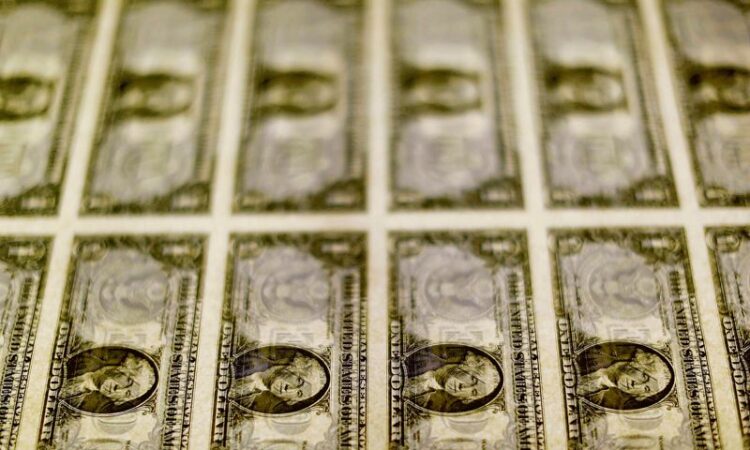
Aunindyo Chakravarty
Senior Economic Analyst
THEY say when the US’s central bank — the Fed — sneezes, the entire world catches a cold. It is not difficult to understand why. The US is the world’s biggest economy, and the dollar is the world’s most powerful currency. Americans consume a large chunk of the world’s surplus, and if they cut back, every country is affected. Along with that, much of the world’s savings is in US dollars. So, when the US Fed takes decisions that affect the dollar, investments in financial markets also get affected.
Like every central bank, the Fed sets the signal interest rates for the US economy. Textbook economics tells us that if there is persistent high inflation in an economy, one way to tackle it is to raise interest rates. This discourages entrepreneurs from taking big loans and investing in new factories and hiring more workers. High interest rates also deter consumers from taking personal loans to buy a home or a car, or expensive consumer durables. As the demand for both capital and consumer goods falls, inflation begins to ease. Similarly, as entrepreneurs hire fewer workers, wages also fall, causing a further drop in demand. And, as the good old supply-demand fable tells us, when demand falls, prices also fall.
US interest rates right now are at their highest in 22 years, and the Fed has indicated that it will raise rates once more before the year ends. Although the Fed expects interest rates to soften next year, Larry Summers, Harvard Professor and former US Treasury Secretary, believes interest rates will have to go up in 2024 too because inflation is unlikely to ease.
What does that mean for our economy and financial markets? Like every other emerging market, India’s equity and debt markets also depend on foreign portfolio investments. A part of American household savings find their way to India, seeking higher returns than what they can get in their domestic economy. This involves a complex set of calculations, which cannot be reduced to just the difference in the rates of return in the US and India. The dollar-to-rupee exchange rate also plays a big role here.
To understand this, let us assume that a fund invests $10 million in India when the USD exchanges for
Rs 70. This means that when converted to rupees, the fund will be able to invest Rs 7 crore in the Indian stock markets. Now, imagine that the markets rise by 12 per cent at the end of the year. The value of the fund’s India investments rises to
Rs 7.84 crore. However, in the same one year, the rupee has weakened to
Rs 80 to a dollar. Now, when the fund converts its rupees back to dollars, it ends up with just $9.6 million. Instead of gaining 12 per cent, it has ended up with a 4 per cent loss. It would have been much better off earning a slightly lower return in the US itself. So, a fund will only invest in India if it believes that its returns will be higher, even if exchange rate changes eat into a part of the profits.
That is why even a marginal increase in interest rates in the US, or even a signal that rates will increase in the future, makes US funds reassess their investments in other countries, especially emerging markets, where growth can be fickle. So, when the Fed says it expects inflation to stay high, it effectively is signalling to investors that US interest rates will also stay high for some time.
That is reason enough for US funds to withdraw a part of their global investments and go back to their home economy, because the differential they can earn outside reduces. When they return, they reconvert their moneys into US dollars from other currencies. This means the demand for dollars rises, strengthening it and in turn weakening other currencies like the rupee. It is no surprise that we saw a sharp drop in the rupee’s value as soon as the US Fed made its pronouncements. It is possible that currency traders began buying dollars even before any actual demand surfaced from investors.
This double impact — money flowing out of bourses in other markets and their currencies weakening against the dollar — increases the investment risk associated with markets in these countries. Foreign investors now need an even higher potential return than they would have needed earlier. For import-dependent countries like India, import costs go up as the dollar strengthens. This is especially significant when it comes to oil imports. Even if the dollar price of crude oil remains the same, the rupee price rises, making all crude-oil products more expensive. And, since crude plays such a vital role in a modern economy — being the source not only of fuel but also of plastics and other key products — a rise in the rupee price of crude has a significant impact on the overall level of inflation in the economy.
If all of these unfold in the coming months, the RBI will also have no option but to keep interest rates high. The first reason to do that is to keep Indian debt markets as attractive as those in the US. The second is because of the ‘imported’ inflation caused by a stronger dollar. The RBI cannot afford to add to inflationary pressures by cutting rates and making it easier for people to borrow and spend.
That will end up affecting investments and consumption in India and causing a slowdown in our economy. This is not the best situation for a government ahead of a General Election. Its only option will be to soften the economic blow by spending more and boosting consumption, especially at the lower end of the income scale. Whatever the government does can only act as a palliative. We are too deeply embedded in the global economy to be able to insulate ourselves from this unfolding crisis.



